Japanese rice bowl dishes and five plant-based tips that you can start using for your next Japanese rice bowl meal.

Japanese rice bowls are also known as donburi.
And as you might imagine, rice bowls are one of the simplest and tastiest meals that you could ever make.
Or are they?
Yes they are.
You might think you need chicken or fish or beef, similar to something like Oyakodon Yoshinoya tororo don soboro don.
Those might be some of the more popular forms.
But today, we’re talking about plant-based donburi.
Donburi made with vegetables. plants. so that you can cook differently.
So if you’re trying to incorporate more plant-based foods let this be your inspiration!
so let’s get started – in no particular order, I’ll tell you about five of my favorite japanese rice bowls and some of my best tips for making them.
5 ways you can make plant-based donburi
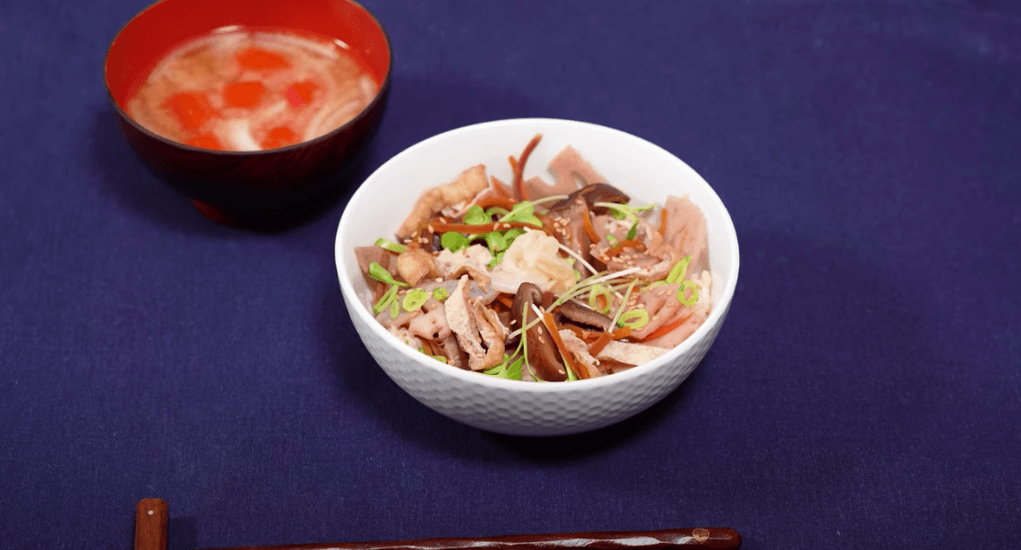
Chirashizushi (scattered sushi with pickled vegetables)
The first Japanese rice bowl is chirashizushi.
Chirashizushi may or may not come in a bowl depending on the cookware or the dinnerware or plateware that you have at home, so don’t worry.
Also, did you know that not all sushi needs to be in a roll form or shape, or include seafood?
In fact, one of my favorite ways to eat chirashizushi or literally scattered sushi is with vegetables.
Pickled vegetables especially make a difference, for example pickled carrot, gobo (burdock root).
Alternatively, simmered vegetables like Japanese shiitake (mushroom) or aburaage (deep fried tofu pouches) or even regular tofu.
So what’s my tip here?
Using brown rice.
If you remember, in one of the first few episodes that we did in the season, i talked about some of the benefits of using brown rice in your Japanese cooking. ICYMI – find it here – brown rice vs white rice | WHICH is healthier for you?
So why brown rice?
It’s going to add a little bit more flavor, texture, nutrition, and it’s going to make for a nice, filling meal as compared to white rice.
You can actually even use wasabi or ginger pickled ginger, if you have it, for similar flavors and aromas to enjoy your chirashizushi.
Check the link for my go to chirashizushi recipe in my newest cookbook – Getting started with plant based Japanese foods.

Ankake donburi (savory dashi seasoned rice bowl)
My second-favorite Japanese rice bowl is going to be ankake.
Ankake is literally a dashi-based sauce that has been thickened with the starch, like potato starch, katakuriko, kuzuko, which is arrowroot starch.
And it’s almost like gravy, without any of the fat because you’re using dashi.
If you’re doing a plant-based dashi, it’s going to be something like maybe kombu dashi, or shiitake dashi, or a combination of the two, plus a little bit of sugar plus or minus some soy sauce, and/or other other ingredients to help the flavor be extremely satisfyingly rich and delicious.
I like gravy.
Growing up potatoes, mashed potatoes, specifically, are one of my favorite foods to eat.
And if you love potatoes as much as me, and gravy as much as me, chances are you’re going to love ankake.

All you need to do is add a little bit of cooked vegetables, maybe some tofu or some mushrooms for a nice and delicious meal.
So, what’s my tip for an ankake donburi?
Using different starches for different consistencies.
So arrowroot starch, and potato starch, and cornstarch.
Those are all going to be slightly different in terms of the gelling factor depending on how much liquid you’re using versus the actual starch.
Plus, you’re going to vary the types of dashi that you’re using, and the shoyu or the soy sauce, or mentsuyu, which is a noodle soup base which can also be used to change things up in terms of the flavor profile.
Here’s a link to the recipe Yasai ankakedonburi (Vegetable rice bowl) 野菜丼 which you can also find in my cookbook – Getting started with plant based Japanese foods.

Japanese curry rice bowl (karedonburi)
My third favorite Japanese rice bowl is curry.
Kare is the word for Japanese-style curry, of course.
And one of my favorite things to eat year-round.
Who doesn’t like curry?
Especially if it’s homemade and made from scratch.
It’s easy to do, and it tastes better than anything that comes in a box.
At least that’s my opinion.
What is yours? Let me know in the comments below.
So if you want to know my tip for Japanese curry rice bowl, it’s going to be, a surprise…
may be not for some of you who are more experienced in cooking plant-based foods
chickpeas
Chickpeas are neutral in flavor, and creamy in texture.
And thus, make for a very easy ingredient or substitutes for chicken or beef, which is commonly added to Japanese curries.
And it makes for a very filling meal as well.
Try it next time and let me know how it goes.
And report back with a comment.

Unaju (but made plant based with my favorite Kabayaki sauce!)
So, my fourth favorite Japanese rice bowl or donburi is going to be unaju.
Unaju is traditionally made with unagi, which is a type of fish.
Even though it doesn’t really look like a fish in terms of the shape, it actually is a fish.
And given that unagi is traditionally made with unagi or eel, you don’t have to eat it if you don’t want to.
Plus, good-quality unagi imported and raised in Japan tends to be pricey.
Is it worth it?
Absolutely.
So, if you’re plant based, you might be wondering what the next best thing would be.
And that’s going to be a combination of three ingredients.
Combining those ingredients together makes for consistency and texture that is very similar to unagi.
And you might be pleasantly surprised if you haven’t tried it yet.
Tororodon
So, the fifth Japanese rice bowl that we’re going to be talking about is going to be tororo don.
Tororo is the name of the key ingredient – the same ingredient that we just talked about.
Neba neba neba neba – nagaimo.
And I say neba neba because that’s the word for like the sticky, slimy, stringy texture that both natto and tororo provide.
And it’s one of my favorite ways to enjoy a simple plant-based Japanese rice bowl.
So, usually when I’m eating this, I like to eat it with natto, which is fermented soy beans, as well as umeboshi, which is pickled plum, plus or minus a little bit of shoyu or soy sauce, and toasted nori. And this is actually something that you can serve as a side dish or okazu, kind of like what we talked about in the previous video, or you can eat it as an entire meal.
Tororo donburi tips
So, some of my tips for you in terms of making this version of a Japanese rice bowl is to vary the ingredients.
obviously, your base is going to be the nagaimo, tororo, as well as the natto and umeboshi.
So you can add things like kimchi, which is the fermented cabbage mixture, the Korean style. There’s also Japanese-style if you want something a little bit more mild.
You can use mentsuyu, which is the noodle soup base.
You can use use yuzukosho if you want something a little bit spicy, as well as grated ginger, freshly-grated wasabi, and freshly-chopped onions.
And even shiso.
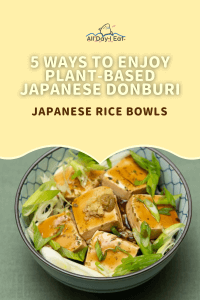
japanese rice bowls | 5 ways to enjoy plant based japanese donburi video
enjoy the video? make sure to subscribe so you dont miss any of my newest japanese cooking videos!



Konnichiwa! (Hello!) I'm Pat Tokuyama, a Japanese tofu cookbook author, who travels for music, food, and adventure. If you like Japanese tea, checkout some of the newestorganic japanese tea, matcha bowls and noren and more!
** Curious about the Plant Based Japanese Cooking Club? ** Learn more here!
what’s your favorite variation of the Japanese rice bowl or donburi?
We talked about five of my favorites.
And if you haven’t had any of these before, which one would you try first?
The first one, the second one, the third one, the fourth one, or the fifth one? Let me know in the comments with a 1, 2, 3, 4, or 5!


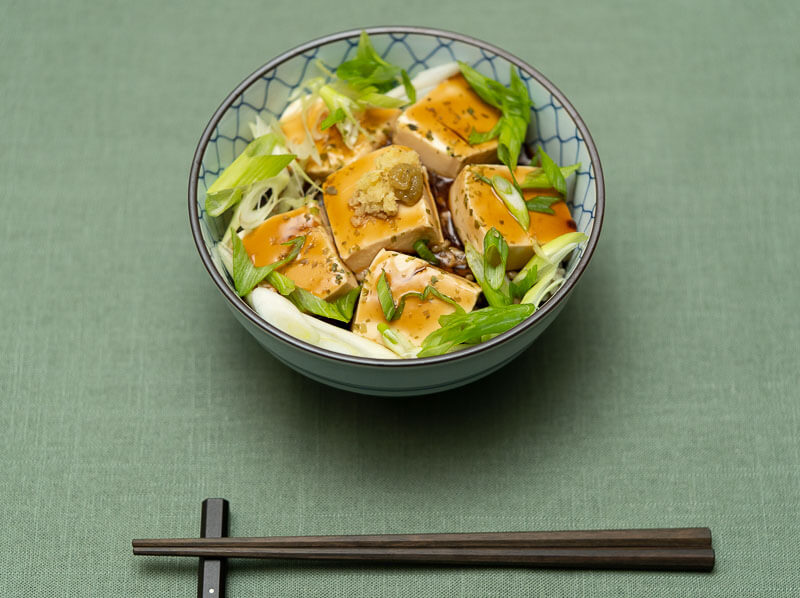

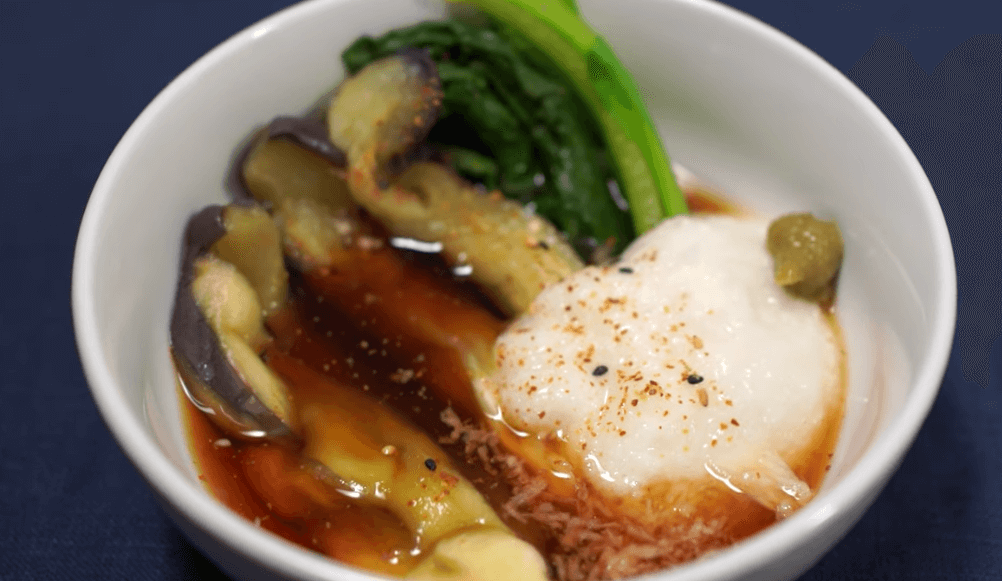
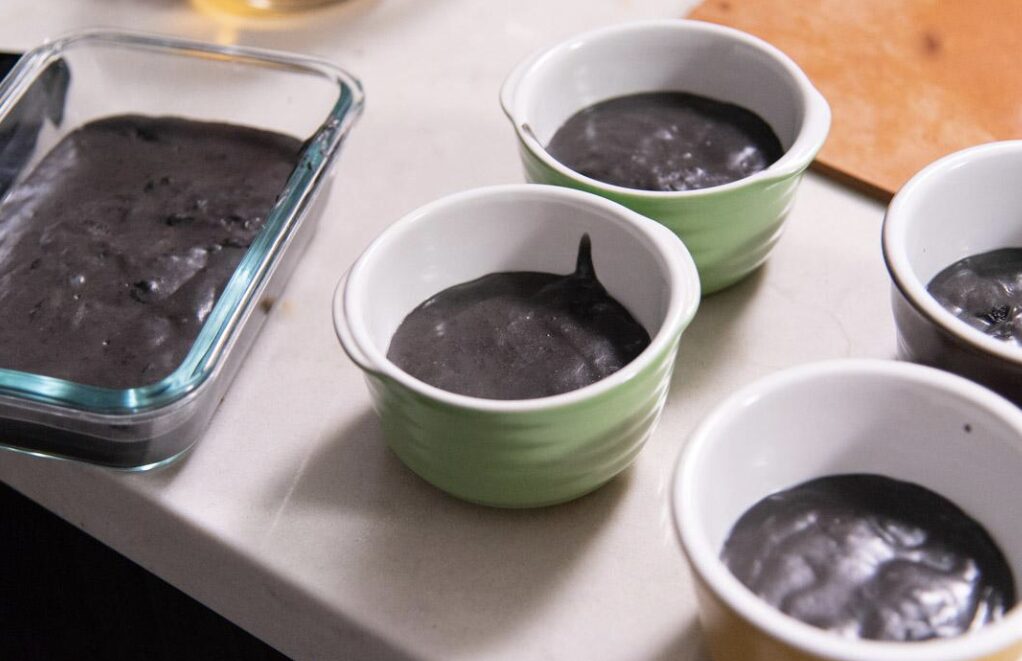
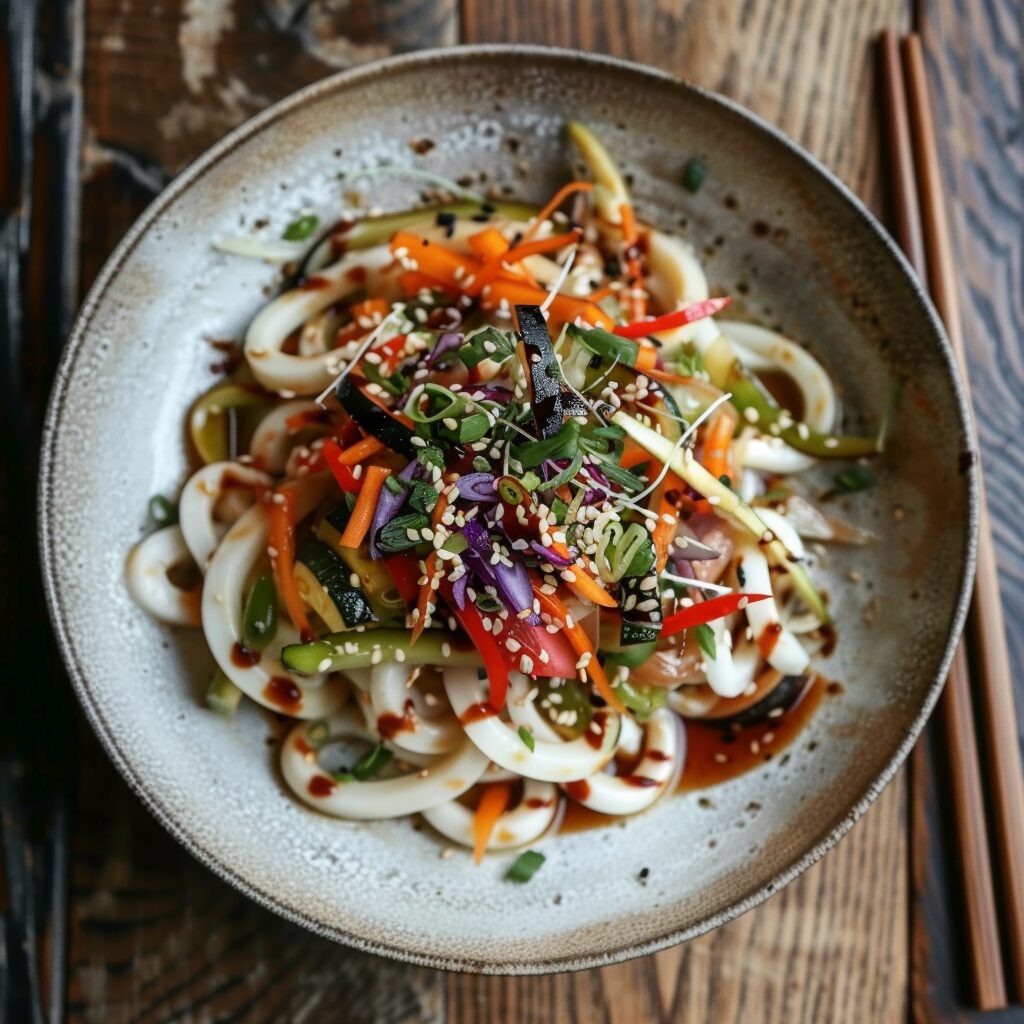

Konnichiwa! (Hello!) I'm Pat Tokuyama, a Japanese tofu cookbook author, who travels for music, food, and adventure. If you like Japanese tea, checkout some of the newestorganic japanese tea, matcha bowls and noren and more!
** Curious about the Plant Based Japanese Cooking Club? ** Learn more here!